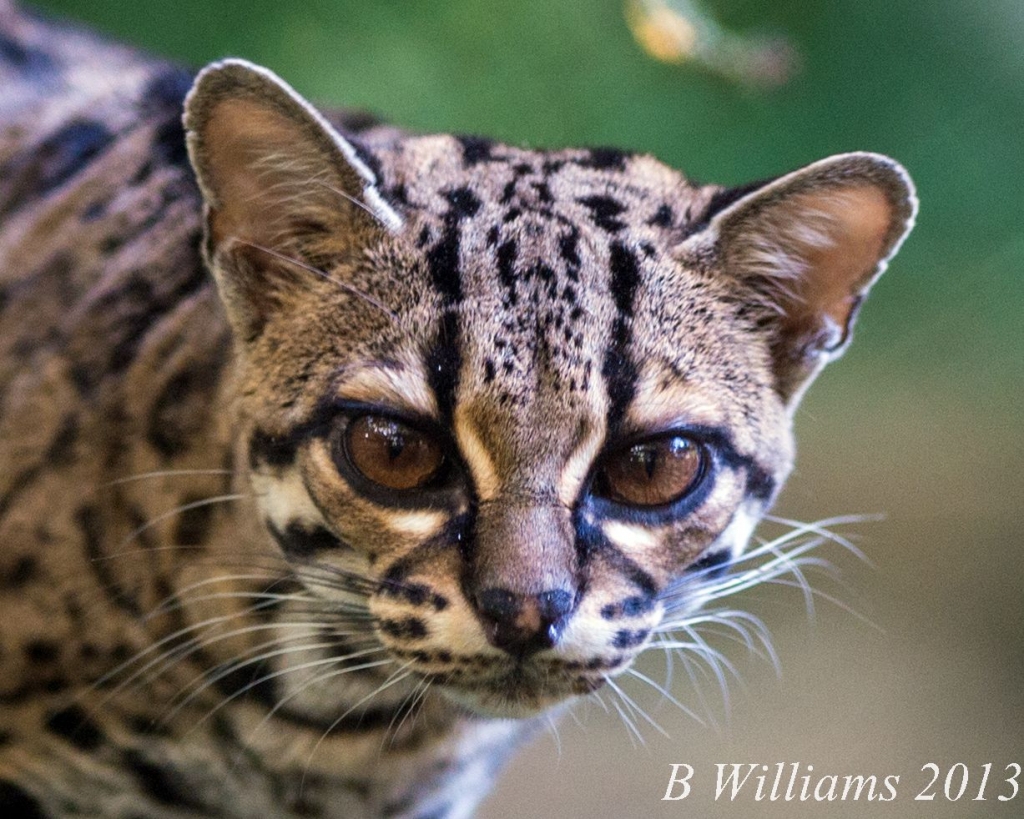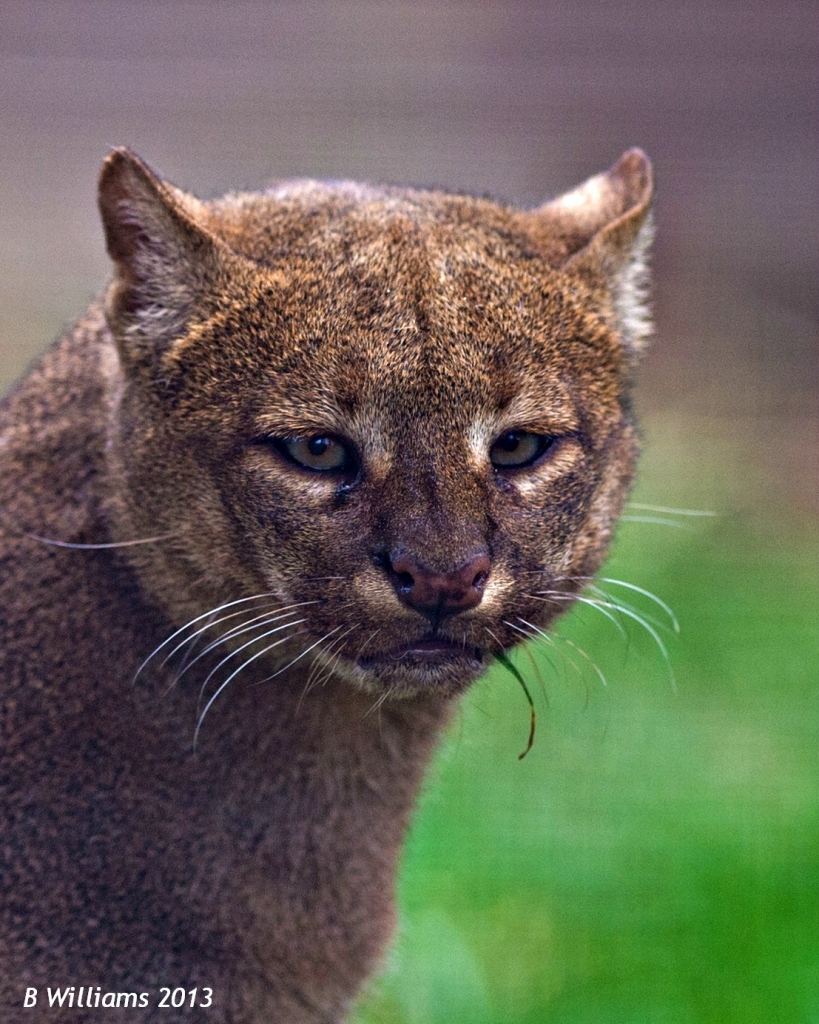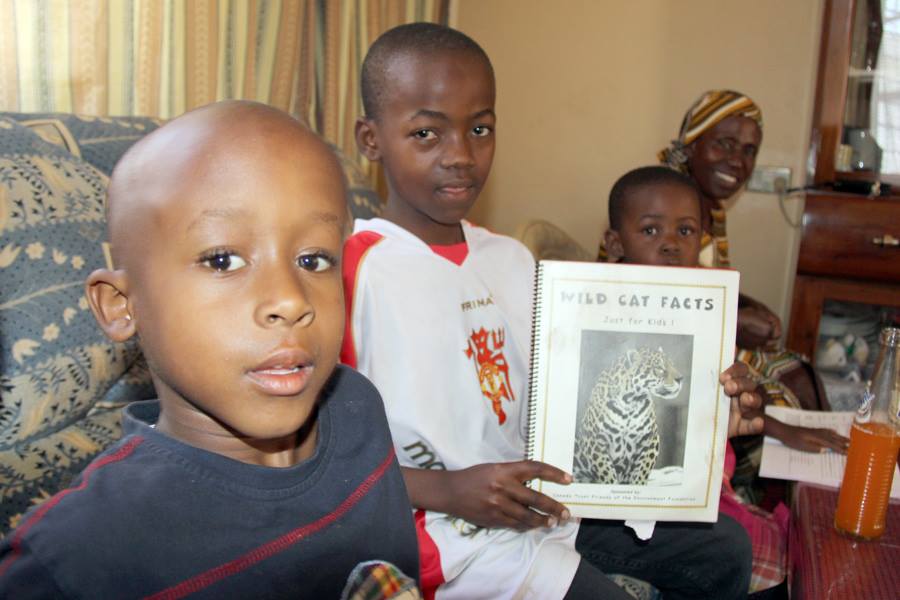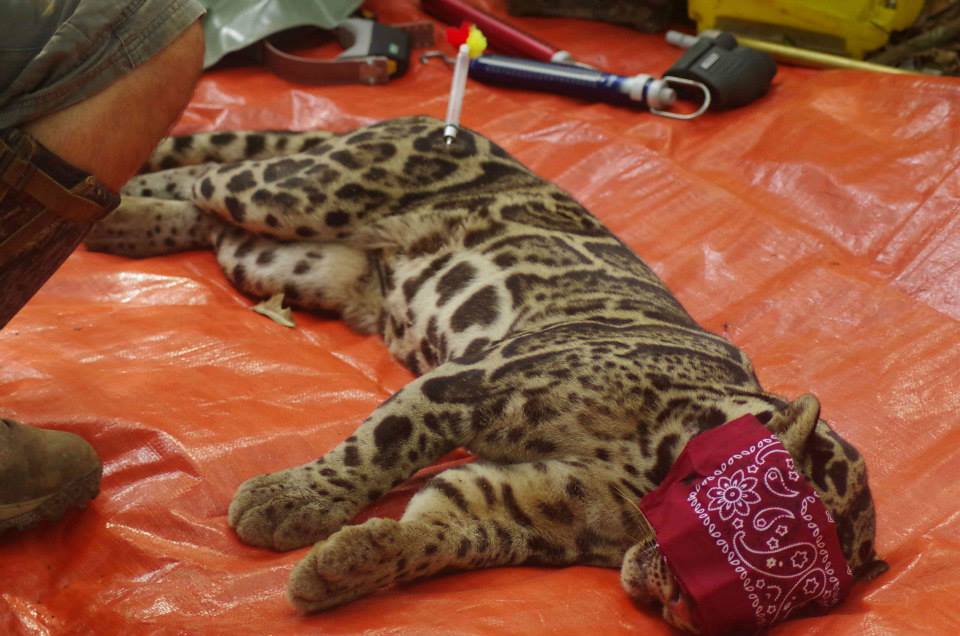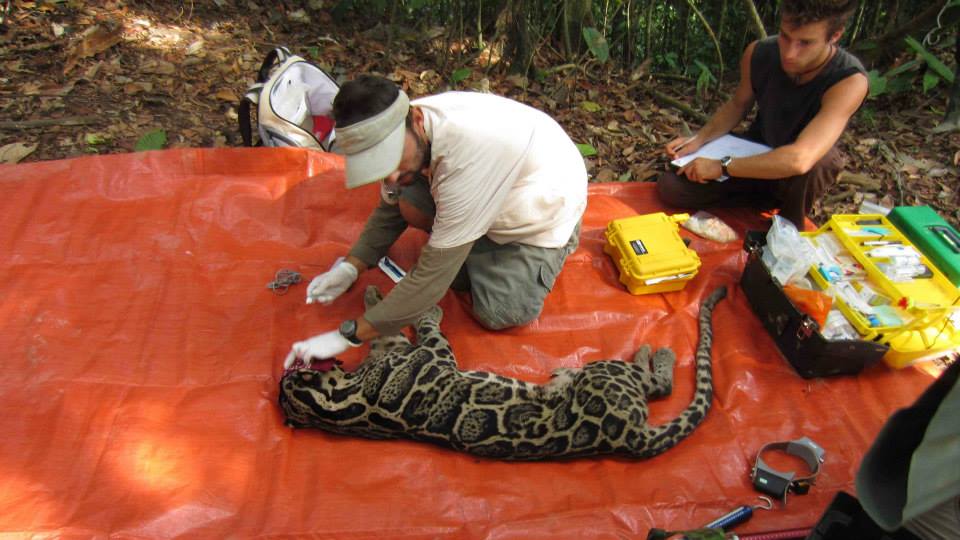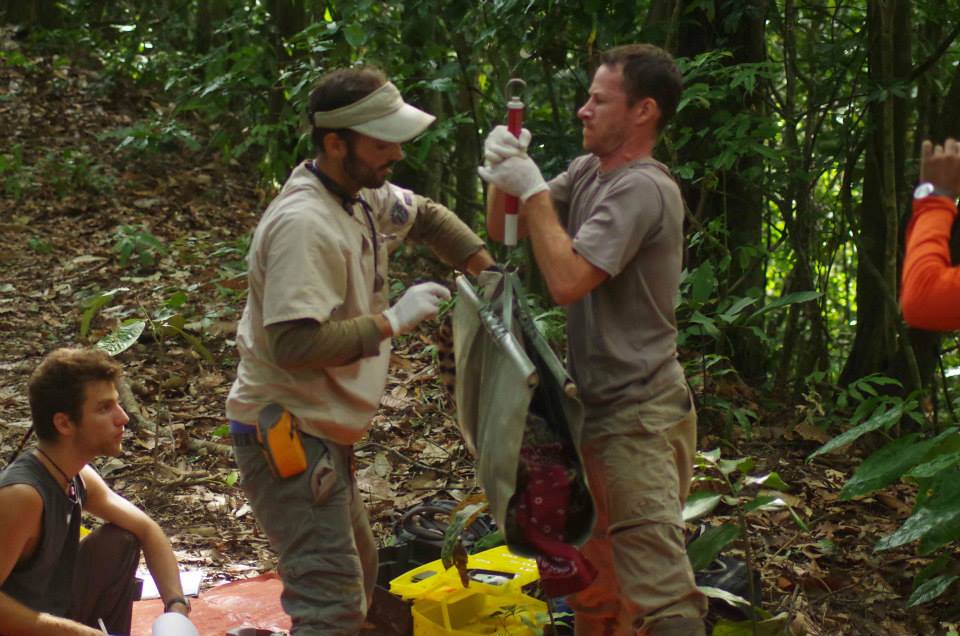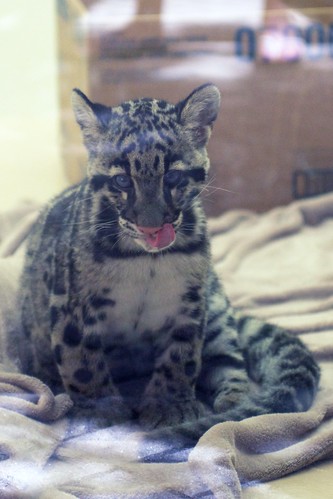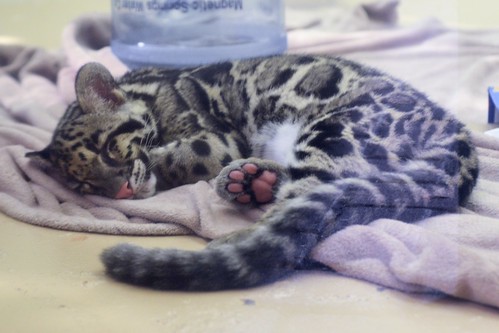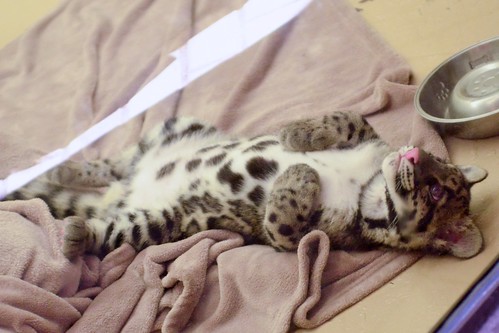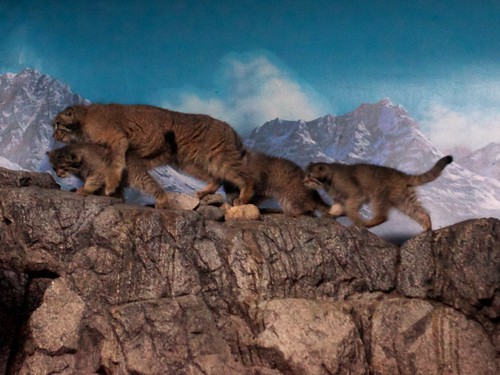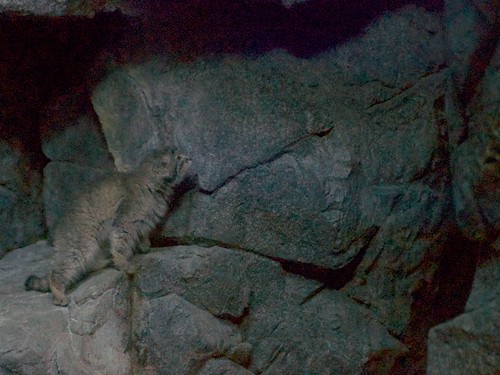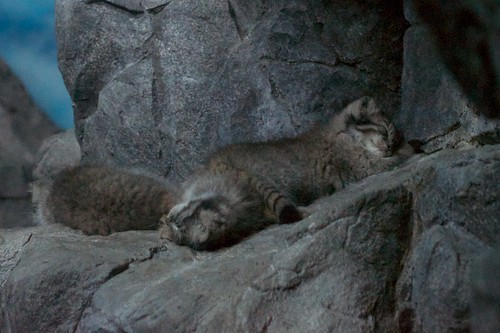Snapshot: Jaguarundi
ISEC book makes friends in Tanzania
ISEC Canada friend Carol Peterson of Nature Encounter Tours just sent us this wonderful photograph from Tanzania. A few years ago, we distributed free copies of our Wild Cat Facts book to many countries in Africa. Carol was overjoyed to see these adorable kids reading our book when she visited them this week.
First Sunda Clouded Leopard Collared
A wild Sunda clouded leopard was recently trapped and fitted with a satellite collar for the first time ever, as part of a collaborative project between the Sabah Wildlife Department (SWD), WildCRU and the Danau Girang Field Centre (DGFC).
On Sunday 15 September, early morning, a male Sunda clouded leopard weighing 25 kgs, was caught in one of our traps set up along the Kinabatangan River, Sabah, Malaysia in the vicinity of DGFC. Rarely seen, Sunda clouded leopards are amongst some of the most elusive and secretive of the world’s wild cats, and as such, remain one of the least understood. The leopard was fitted with a satellite collar to provide us with crucial information on its movements in the Kinabatangan landscape. It should send a location every 20 minutes for about 4 to 6 months, enabling us to determine its home range and how it is able to move through the fragmented landscape. Incredibly, a few days later, we caught another individual, an old female, weighing only 9 kgs. She was too small and too old to collar, but we have been documenting her in the Kinabatangan since 2010, using camera traps.
SWD, DGFC and WildCRU wish to thank Sime Darby Foundation for their support and for providing a grant of MYR 1.46 Million towards our project on the conservation of the Sunda clouded leopard and sympatric carnivores in Sabah. Additional funding and support are provided by Atlanta Zoo, Houston Zoo, Recanati-kaplan Foundation, Robertson Foundation, Point Defiance Zoo and Rufford Foundation.
Sept 21, 2013 News release from Danau Girang Field Centre
African Golden Cat, Caracal and Serval in the Central African Republic
By Raffael Hickisch and Thierry Aebischer
We report here that all three species of the caracal lineage were recorded in the same areas of the Chinko/Mbari drainage basin of eastern Central African Republic. Using camera traps we recorded African golden cat three times at one site, 190 km north of its recognized range. The caracal was recorded once, 250 km south of its recognized range and 7 km from where the golden cat was recorded. Finally, the serval was recorded on 12 events, 4 km from where the golden cat was recorded. The indication of this sympatric presence of all three species of the caracal lineage has not been reported for many (if any) areas in Africa and is worthy of further investigation.
These findings are remarkable. The occurrence of golden cat in the highly fragmented savannah/rainforest patch at that latitude was unexpected. Given that the golden cat is known as a forest and deep forest dweller, one would expect to see it 200 km away in the contiguious lowland forest. The fact that we detected serval 4 km away and caracal 7 km away from the site of the golden cat captures show that all three species occur within close range of each other.
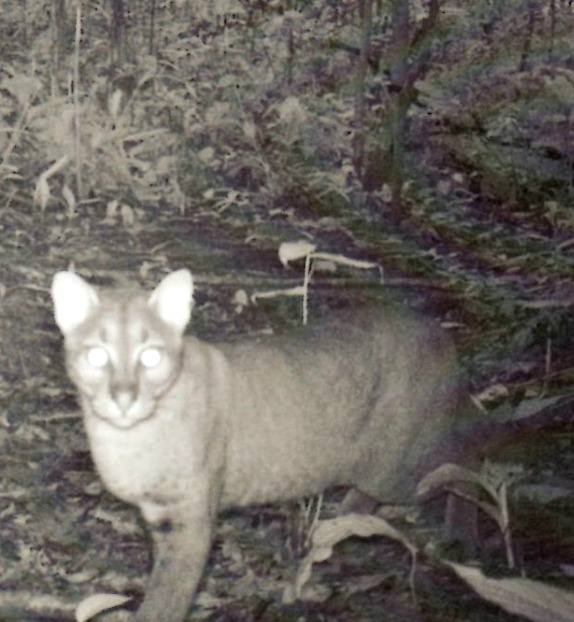
According to known species ranges, there are very few areas that actually indicate a possibly sympatric presence of all three species, and we believe this to be the first documentation of such an occurrence.
Surprisingly, our camera traps did not record a single African wild cat Felis silvestris, nor did we see tracks on this species on the line transects. Additionally, safari hunting staff operating in this area since 2007 have failed to record this small cat in the area. According to published distribution maps, we would expect to find this fourth member of the African small cats in the Chinko/Mbari drainage basin.
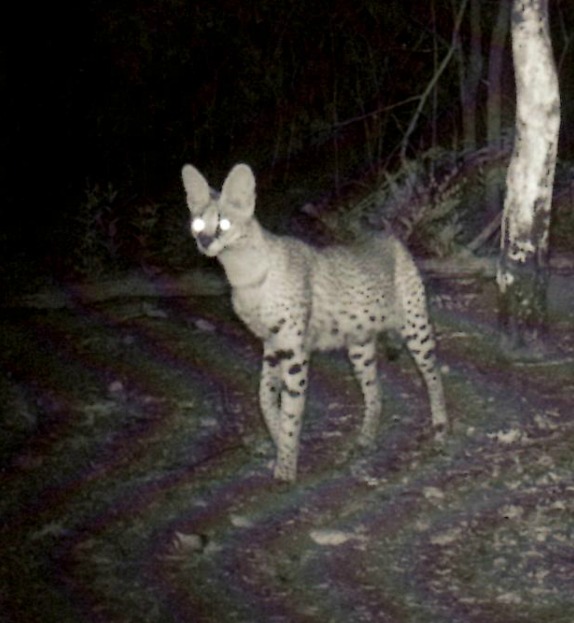
Because of this curious finding, we plan to publish a comprehensive analysis of all predator events the camera traps recorded in 2012 and more findings on occurrence, abundance and habitat preference of species from the caracal lineage as soon as possible. We will continue to generate and share relevant data in the coming years of research and conservation work in the Chinko/Mbari drainage basin.

Pressure on this important area is expected to increase with poaching, land use changes, and political unknowns, underlining the need to understand this unique habitat and its functioning to prepare for future precautions.
Source: IUCN Cat News 58, Spring 2013
Saber the Clouded Leopard
Zoo animals are ambassadors for their cousins in the wild.
–Jack Hanna, Director Emeritus of the Columbus Zoo and Aquarium
The newest member of the Columbus Zoo‘s ambassador is Saber, a four month old clouded leopard. He’s named for his teeth: clouded leopards have the largest teeth of any felid (relative to their body size).
He’ll eventually have the job of educating people about his species, and how to help protect these animals in the wild. For instance, a major cause of habitat lose for clouded leopards (among other animals) is palm oil production. Consumers can make smart choices, and buy products made with sustainable palm oil–there’s even an app for that.
For now, though, he’s happy just to show his fans his magnificent belly!
10 Most Popular Pages on Our Site
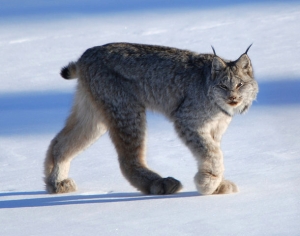 We have a LOT of pages on this site! After all, we’re dealing with 28 small feline species on seven continents. Add in the blog posts and the amount of information available here is massive.
We have a LOT of pages on this site! After all, we’re dealing with 28 small feline species on seven continents. Add in the blog posts and the amount of information available here is massive.
As we do on occasion, we’ve compiled a list of the 10 Most Visited Pages, which have changed a lot since the last time we looked. If your favorite cat is not on this list, spread the word and tell your friends to have a look at their fact sheet!
#10- Wild Cats Blog
#9 – Black-footed Cat Project
#8 – Oncilla Fact Sheet
#7 – Bobcat Fact Sheet
#6 – Ocelot Fact Sheet
#5 – Margay Fact Sheet
#4 – Black-footed Cat Fact Sheet
#3 – African Golden Cat Fact Sheet
#2 – Wild Cats
And the most popular page, by a large margin:
#1 – Canadian Cats
We would love to expand our coverage of Canadian cat species, so if there is anything you would to see on our site, please leave us a comment below!
Inverted Ocelot
Endangered Animal Products To Be Banned From Etsy
Following a petition launched by the Snow Leopard Trust and signed by more than 33,000 people, the trend-setting online marketplace Etsy.com steps up for wildlife and explicitly bans listings containing parts of endangered animals from their site.
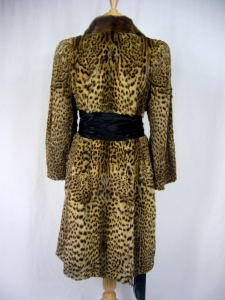
The Snow Leopard Trust is happy that the trend-setting marketplace for handmade and vintage goods Etsy.com has adopted new policies designed to stop the trade in products made with parts of endangered animals in their marketplace. These new policies, announced today on the Etsy News Blog, meet the demands of more than 33,000 wildlife supporters who had signed an online petition launched by the Snow Leopard Trust. “We’re very glad that Etsy is stepping up for wildlife”, says Brad Rutherford, the Snow Leopard Trust’s Executive Director. “It’s great to see the company live up to their billing as a mindful and humane business.”
Illegal Trade at an All-Time High
According to a report published in 2011 by Washington-based lobby group Global Financial Integrity, illegal wildlife trade has reached an all-time high of up to $10 billion total annual revenue; threatening to overturn decades of conservation gains. For endangered species to survive, this trade has to be stopped.
As they are vast and difficult to monitor, online marketplaces have long been abused as venues for endangered animal products to be sold. Conservation activists have successfully convinced leading platforms like eBay and Amazon to protect themselves and their communities from this illicit trade by explicitly banning any product made with parts of endangered animals – including “vintage items” – from their sites.
Source: www.snowleopard.org
